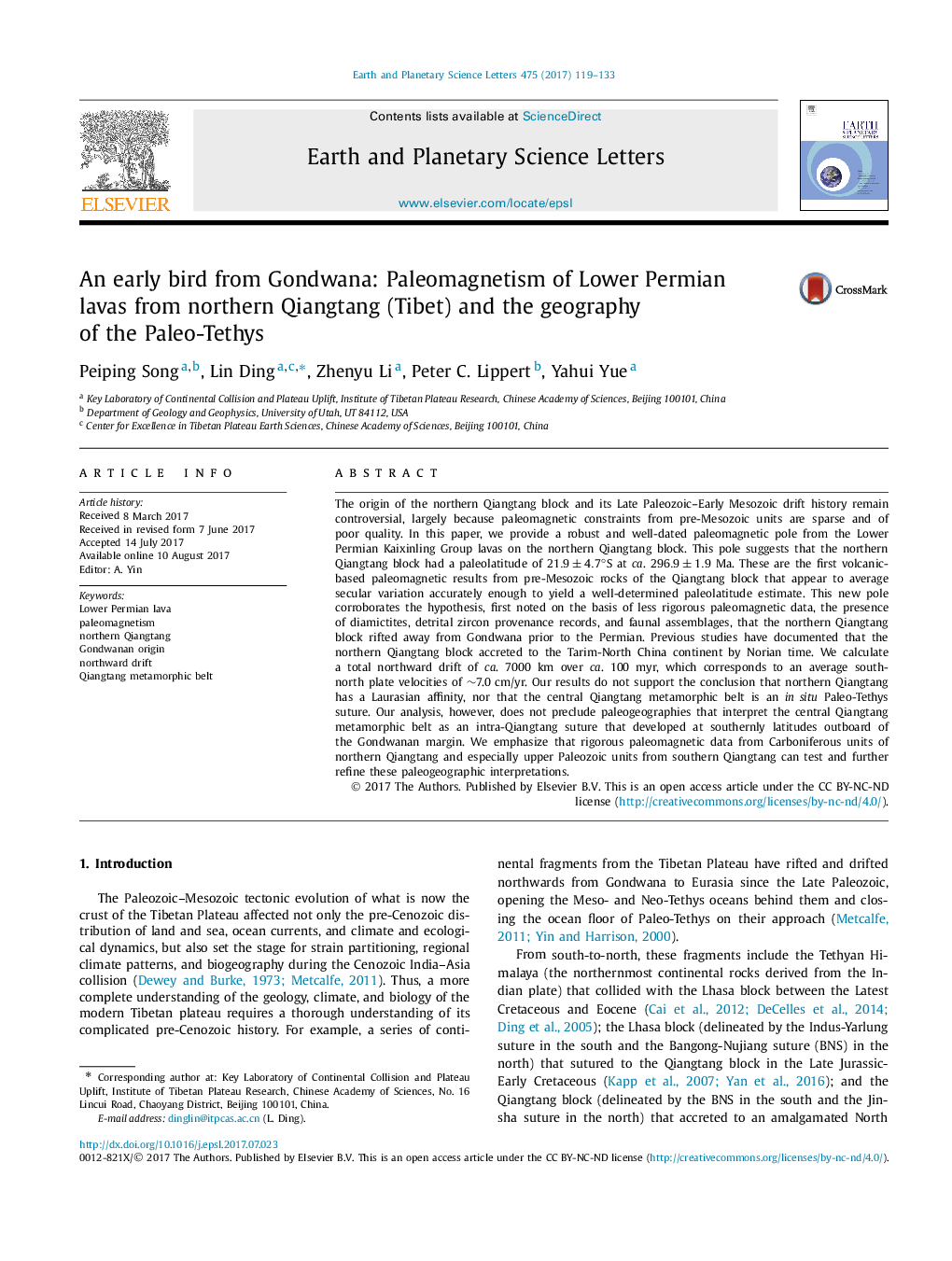| کد مقاله | کد نشریه | سال انتشار | مقاله انگلیسی | نسخه تمام متن |
|---|---|---|---|---|
| 5779661 | 1634681 | 2017 | 15 صفحه PDF | دانلود رایگان |

- We provide Early Permian volcanic paleomagnetic results from northern Qiangtang.
- Northern Qiangtang had a paleolatitude of 21.9±4.7°S at ca. 296.9±1.9Ma.
- Northern Qiangtang rifted away from Gondwana prior to the Permian.
- Northern Qiangtang drifted northward totally ca. 7000 km over ca. 100 myr.
- The Qiangtang metamorphic belt is not an in situ Paleo-Tethys suture.
The origin of the northern Qiangtang block and its Late Paleozoic-Early Mesozoic drift history remain controversial, largely because paleomagnetic constraints from pre-Mesozoic units are sparse and of poor quality. In this paper, we provide a robust and well-dated paleomagnetic pole from the Lower Permian Kaixinling Group lavas on the northern Qiangtang block. This pole suggests that the northern Qiangtang block had a paleolatitude of 21.9±4.7°S at ca. 296.9±1.9Ma. These are the first volcanic-based paleomagnetic results from pre-Mesozoic rocks of the Qiangtang block that appear to average secular variation accurately enough to yield a well-determined paleolatitude estimate. This new pole corroborates the hypothesis, first noted on the basis of less rigorous paleomagnetic data, the presence of diamictites, detrital zircon provenance records, and faunal assemblages, that the northern Qiangtang block rifted away from Gondwana prior to the Permian. Previous studies have documented that the northern Qiangtang block accreted to the Tarim-North China continent by Norian time. We calculate a total northward drift of ca. 7000 km over ca. 100 myr, which corresponds to an average south-north plate velocities of â¼7.0 cm/yr. Our results do not support the conclusion that northern Qiangtang has a Laurasian affinity, nor that the central Qiangtang metamorphic belt is an in situ Paleo-Tethys suture. Our analysis, however, does not preclude paleogeographies that interpret the central Qiangtang metamorphic belt as an intra-Qiangtang suture that developed at southernly latitudes outboard of the Gondwanan margin. We emphasize that rigorous paleomagnetic data from Carboniferous units of northern Qiangtang and especially upper Paleozoic units from southern Qiangtang can test and further refine these paleogeographic interpretations.
Journal: Earth and Planetary Science Letters - Volume 475, 1 October 2017, Pages 119-133